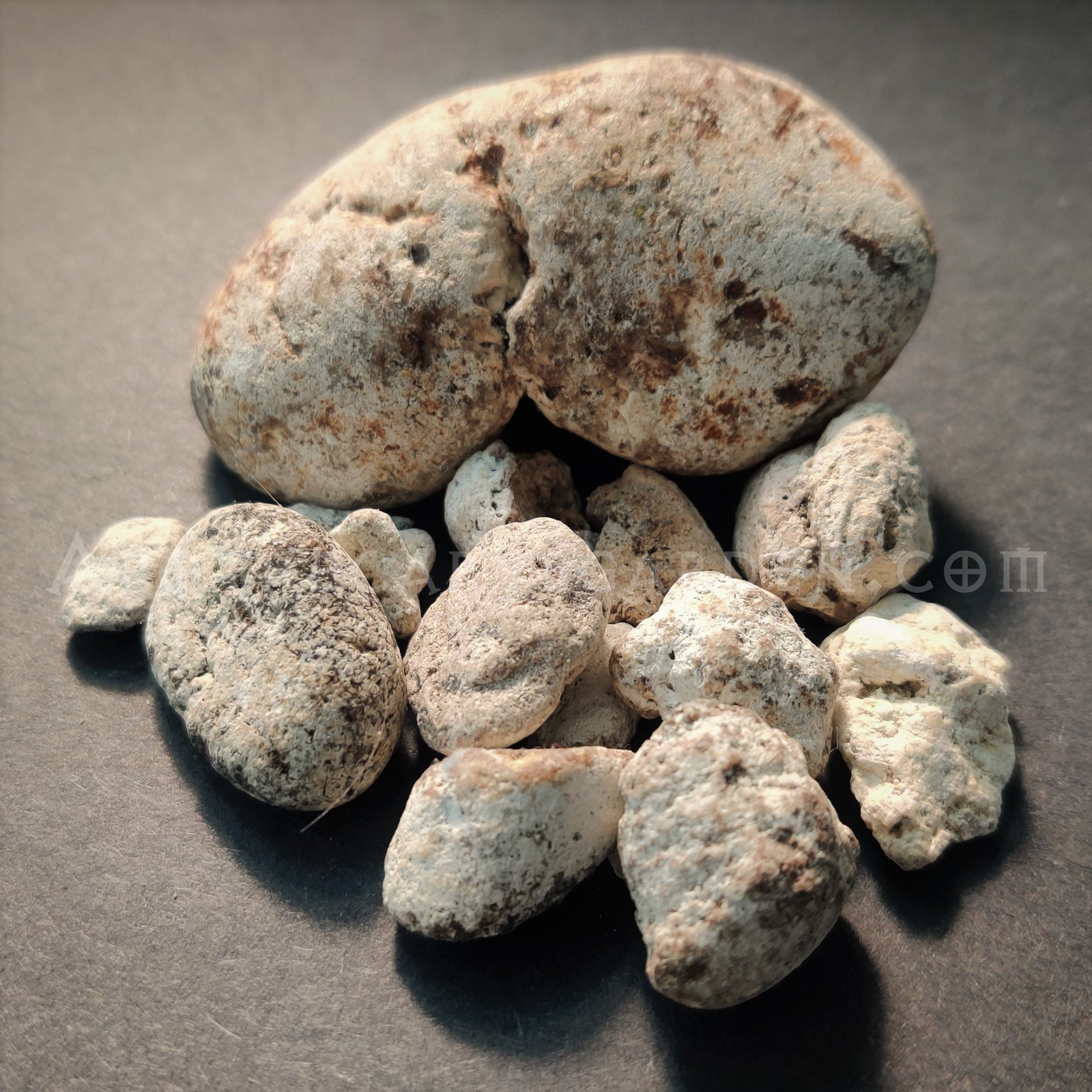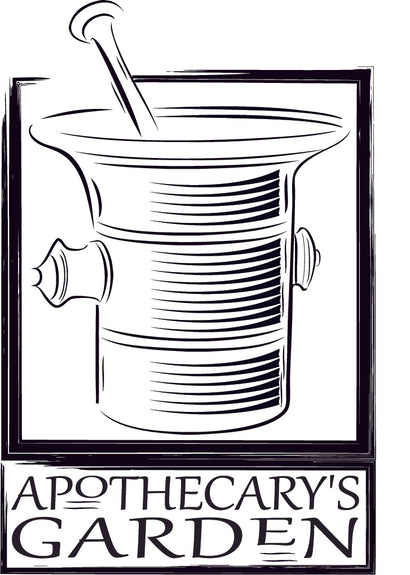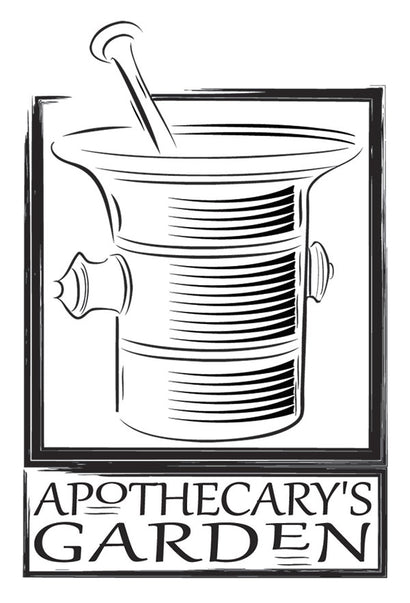Free shipping in USA & Canada on orders over $100.00
Free shipping in USA & Canada on orders over $100.00

Ambergris-How to prepare an oil, Attar and tincture
by Dan Riegler November 27, 2023 6 min read 2 Comments
Ambergris-How to prepare an oil, Attar and tincture
By Dan Riegler

White/Grey Ambergris
Ambergris is one of the rarest & most precious gifts of Nature, and coveted since ancient times for it’s value in perfumery, incense making and traditional medicine. Considered an aphrodisiac since time immemorial, it fetches Astronomical prices for those lucky enough to find it washed up on beaches around the world.
Ambergris can float on the ocean for years and age for decades on beaches before it is found. Its collection and use cause no harm to the environment or to the whales.

Ambergris is a waxy material similar in chemical structure to cholesterol that collects in the stomach of the Sperm Whale, (Physeter macrocephalus). Produced in its bile duct, it coats irritants and indigestible objects and prepares them for safe evacuation. Theories vary as to which end of the whale they find egress.
Till recently these indigestible contaminants were limited to Squid beaks and other natural inclusions of an oceanic diet. Now, however, one finds a variety of foreign objects collected in whale digestive tracts and wrapped up in Ambergris.
Ocean Gold in the age of plastic
A recent purchase of 2 large pieces of Ambergris disclosed multiple layers of plastic bags tightly wrapped in Ambergris pointing a finger at the deteriorating state of our oceans. A reminder of the destructive impact we have on ocean life around the world.

A unique perfume ingredient
In perfume, Ambergris is used as a fragrance material and a fixative, lending marine, animalic and Musk notes to perfumes while slowing down the evaporation of more fleeting fragrances. Like other animal sourced perfume ingredients, it adds a dimension that is difficult for synthetic and botanical aromatics to deliver on their own.
Oddly, the magic and transformative power of Ambergris in perfume lies not in the strength of its aroma or proportion of its presence in a blend. Liminal, as if anchored in the intangible interstices of scent and senses, it rounds out and pulls together a bouquet from underneath while adding depth, tenacity and a unique dimension to compositions by means of a mechanism that is not well understood.

Brown/Black Ambergris with a “darker”, animalic scent.
As an incense material
Ambergris is traditionally burned as incense though the odor is not to everyone’s taste. Conversely, it can be blended into a compound incense when powdered or in the form of a tincture which will disperse through the material prior to the alcohol evaporating.

Burning Ambergris-John-Parker-Sargent
In Gourmand food
Historically, Ambergris has been used to flavour egg dishes, wild game, ice cream, tea, coffee and liqueurs. In Morocco, a small piece of is adhered to the inside of the tea pot lid where it imbues the infusion for a lengthy period with it’s unique fragrance. In Turkey, it is boiled in the traditional Turkish coffee as an aphrodisiac, to bolster the libido and male constitution.
As medicine
Used for centuries in Unani and Ayurveda systems of medicine, Ambergris has a traditional role as an Aphrodisiac and is used in formulas that treat sexual debility, premature ejaculation and in tonic formulas for the heart, liver, brain and kidneys.

Different types of Ambergris
Though Ambergris is found in many colours, shades, sizes and shapes, it can be generally divided into 3 types, white/grey, gold/brown and brown/black.
The lighter coloured material often has a drier, softer marine odour, with hints of Tobacco and ocean breeze. It usually has a light, clean and crisp fragrance.
The gold can have a soft, dry, Amber scent with Oak and Tobacco couched in Petrichor, (the scent of earth when it rains). It has a brisk marine note and a pleasant, soft animalic musk. It often has a gold colour with black striations.
The Brown material can border on black, and can sometimes be a bit softer/stickier than the other types. It has a strong, dark, earthy scent and a musk-like animalic note layered over wet-cured tobacco and the scent of the ocean. That being said, I continue to discover exceptions to these loose rules.
Aromatically, the 3 types usually range in intensity of scent with Grey being the lightest and Brown/Black having the most intense, or strongest fragrance, The Gold material sits between them in intensity of aroma.
It is important to mention, that in my opinion, there is no type or colour of Ambergris that is better or more valuable than another. They are simply different from each other. Every piece of Ambergris is unique and shines when its particular aromatic complexity is understood. Each lump comes from a different individual who has their own unique personality, age, history, favourite foods, dining locations, travel destinations, mentality and physiology. Just like you and I.

Tinctures for perfume
All types of Ambergris are suited to tincturing in alcohol and extracting in oil, though I find the Gold and the Brown material really shine as oils.
An alcoholic tincture brings out different notes than an oil infusion and highlights the Tobacco and marine notes present in the material.
An oil infusion creates a product with more of the animalic and musk notes. Smelling it makes my heart skip every time.
In perfume, Ambergris is used at very low proportions, often added at 1% to 3%. Only a small amount of this tincture is needed to lend a perfume blend a unique edge.

To prepare a tincture of Ambergris
Usually made in concentration of 1% to 10%, a 1% tincture of Ambergris is prepared in the ratio of 1 gram of crushed Ambergris in 99 grams 94%-96% ethanol. It can be initially warmed in the water-bath to speed up dissolution of the material in the alcohol. When finely crushed, heating to 40 degrees Centigrade for 15 minutes is usually enough. Kept in a sealed glass jar in a warm place, the scent of this liquid will evolve for 6 or more months. A 3% tincture is made with 3 grams Ambergris and 97 parts alcohol, a 10% tincture with 10 parts Ambergris and 90 parts alcohol etc. 6 months is the standard minimum maceration time for Ambergris tincture. Once the liquid is ready, it can be filtered through paper, bottled and kept in a cool dark place until needed. (Alternatively, the marc can be left in the tincture to continue maturing and one can pour off tincture as needed). The tincture can be gently evaporated in a shallow cloth-covered dish at room temperature to create an absolute/resinoid. This product is a clean and concentrated form of the material and blends easily with carrier oils, essential oils and alcohol.
To prepare an oil of Ambergris
An oil of Ambergris is prepared in much the same way as an alcohol tincture. Fractionated Coconut or Jojoba oil are used since they are stable and have an long shelf life. Gently warming in a water-bath facilitates breakdown of the material in the oil and a 6 month maceration yields good results.
When the infusion is ready to be decanted it is allowed to sediment then vacuum filtered through paper and bottled for use. Though it can be gravity filtered through a paper coffee filter, it is time consuming.

Preparing an Ambergris “Attar”
What is sometimes called an “Attar” is produced by macerating Ambergris in an essential oil such as Sandalwood, Oud, Frankincense, Amyris, Copaiba, Gurjun, and other essential oils that age well. These can be used as standalone concentrated perfumes or as ingredients and fixatives in perfume blends. The process is identical to preparing an oil infusion and 5%-10% Ambergris is a good general guideline depending on the essential oil and type of Ambergris used.
The term Attar is used loosely here, and traditionally refers to a product created by distilling one aromatic plant material into the essential oil of another. Here we take aromatic license to include infusions of animalic aromatics in essential oils since the animalics cannot be distilled. Theoretically it is possible to distil an essential oil such as Sandalwood into an oil infusion/extract of Ambergris but this too would be stretching the term.

I hope this was of some help and answered some of your questions.
If you decide to prepare any of these products yourself, remember-Always keep clear notes! Your future self will thank you.
Dan
You can find Raw Ambergris in the shop here
And if you prefer to not make your own you will find my Ambergris tincture here
And my Ambergris oil is in the shop here.
Some extra reading material & References- https://juniperpublishers.com/jcmah/pdf/JCMAH.MS.ID.555705.pdf https://www.ncbi.nlm.nih.gov/pubmed/8540767
And as always, feel free to leave a comment below. I would love to hear from you.
2 Responses
Mugambe Enoch
December 07, 2023
Awesome work
Leave a comment
Comments will be approved before showing up.
Also in Apothecary's Garden Blog

How to make an oil extract of Frankincense-2 methods
by Dan Riegler January 17, 2024 7 min read

Suhul Myrrh-A gift from the trees
by Dan Riegler January 03, 2024 5 min read 1 Comment

How to prepare Winter Medicine with local Tree Resins
by Dan Riegler December 14, 2023 9 min read 1 Comment
Recent Articles
-
How to make an oil extract of Frankincense-2 methods
January 17, 2024
-
Suhul Myrrh-A gift from the trees
January 03, 2024
-
How to prepare Winter Medicine with local Tree Resins
December 14, 2023
-
A complete guide to Frankincense resins
December 04, 2023
-
The Many Benefits of Frankincense Tea
November 29, 2023
-
Ambergris-How to prepare an oil, Attar and tincture
November 27, 2023
-
COPAL-What you need to know before you buy.
November 20, 2023
-
How to Grind Frankincense, Myrrh and other Resins
November 17, 2023
-
How to burn Frankincense and other aromatic resins
November 14, 2023
-
How to prepare Castoreum and other aromatic delights
November 06, 2023
Categories
- Ambergris
- Animal Welfare
- Animalics
- Aphrodisiacs
- Aphrodite
- Apothecary Arts
- Boswellia
- Boswellia Carterii
- Boswellia Frereana
- Boswellia Neglecta
- Boswellic Acids
- Boswellis Serrata
- burn incense
- Censer
- Chest Rub
- Commiphora
- Commiphora Myrrha
- Copal
- Cough Balm
- DIY
- ferula
- Frankincense
- Frankincense Extract
- Incense
- Incense burners
- Incense Making
- Incense Resins
- kenya
- Medicated oils
- Muscle Rub
- Musks
- Myrrh
- Perfume
- Perfume Ingredients
- Perfume Making
- Perfumery
- Pine
- Pine Resin
- Sacred Copal
- Samburu
- Spruce Resin
- Suhul Myrrh
- Sustainability
- Sustainable Harvest
- Traditional Medicine
- Tree Medicine
- Tree Resins
- Tutorials
- Wildcrafting
- Wood finishes
Where are you Blog posts Dan?
Please bear with me as I rewrite, update and link my old Blog posts to the new shop. If you don't see the tutorial or post you are looking for, pop in periodically. I should have them all up, updated and running in the next few weeks.
Subscribe
Sign up to get the latest on sales, new releases and more …
- Comments
- DISQUS


Onur
January 16, 2024
Hello. Good day, first of all, I think I am a smell addict. I have been looking for pure ambergris for a long time, but I want an amber that smells of fresh sea, which one would you recommend as a color, thank you.